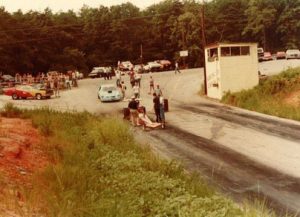 Birmingham is a city rich in history. If your old stomping grounds are here, you passed through on a trip, or you remember Birmingham from news coverage in the 1960s and 70s, you might remember some of these four historic memories. Others may be a delightful new addition to what you already recall about a special part of the South:
Birmingham is a city rich in history. If your old stomping grounds are here, you passed through on a trip, or you remember Birmingham from news coverage in the 1960s and 70s, you might remember some of these four historic memories. Others may be a delightful new addition to what you already recall about a special part of the South:
Lassiter Mountain Dragway has been a huge part of Birmingham culture since 1958. The ¼ drag strip was first built by the Black Widows Car club. It’s real claim to fame came in the 1960s, however, when NASCAR hotshot Richard Petty started competing at the track in his Dodge Barracuda. If you were into car culture and lived in or near Birmingham, Lassiter Mountain was the place to go.
It closed briefly in the early 2000s, but is opening again under new management, which means you can relive those Thunder Road memories again and again.
If you love Southern cooking, there was no better than King’s Catfish King. With four chains throughout Birmingham during the 1960s, King’s was an amazing deal, with all you could eat of fried chicken or fish for just a $1.25. They’ve been closed now for decades, but former regulars still swap recipes from the restaurant, including its classic house salad dressing and its sugar-dusted apple fritters. If you want a similar experience, try Lloyds, another Birmingham classic you may remember. Their catfish gets great reviews.
You can’t talk Birmingham history without mentioning the Alabama and Lyric theaters. Built in 1927 to show silent movies, the Alabama Theater still features its original Wurlitzer theater organ used to provide the soundtrack to films. It was the first public building in the city to have air conditioning. Until 1966, it served as the venue for the Miss Alabama pageant. Today it continues to show films, host concerts, as well as provides a home to the Alabama Symphony Orchestra.
The 1960s were an exciting time, from the space race to television going full color. Birmingham residents might recall in 1967 when beloved local station WAPI-TV made the shift and began airing their broadcast “in living color.” As television networks across the country left black and white behind, you might remember the brightly colored intro animations that stations used to grab viewers’ attention.

